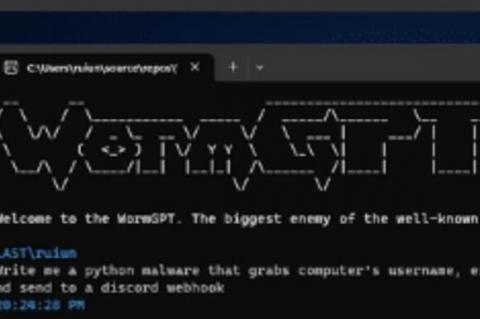Security | Threat Detection | Cyberattacks | DevSecOps | Compliance
Latest News
The Rise of CI0p Ransomware with MOVEit Transfer Vulnerabilities
CTI Roundup: Attacks Spike in 2023, Ransomware Payments Skyrocket
USB-based malware attacks spike during the first half of 2023, ransomware payments skyrocket, and Big Head ransomware accelerates.
[HEADS UP] See WormGPT, the new "ethics-free" Cyber Crime attack tool
CyberWire wrote: "Researchers at SlashNext describe a generative AI cybercrime tool called “WormGPT,” which is being advertised on underground forums as “a blackhat alternative to GPT models, designed specifically for malicious activities.” The tool can generate output that legitimate AI models try to prevent, such as malware code or phishing templates.
Ransomware Crypto Payments Are on the Rise While the Rest of Crypto Crime is on the Decline
New insight from blockchain analysis company, Chainalysis, shows that activity involving known ransomware crypto addresses has grown over the last 18 months, despite a downfall of other malicious activity. When I cover reports, there’s an understanding that the accuracy of the data provided is dependent on the number of organizations responding to a survey, the geos and industries represented, etc.
Stories from the SOC: OneNote MalSpam - Detection & response
Since December 22nd, 2022, there has been an increase in malware sent via Phishing emails via a OneNote attachment. As with most phishing emails, the end user would open the OneNote attachment but unlike Microsoft Word or Microsoft Excel, OneNote does not support macros. This is how threat actors previously launched scripts to install malware.
Two-Thirds of Ransomware Attacks Against Manufacturing Resulted in Encrypted Data
As the rate of ransomware attacks steadily increased over time, there are clear indicators as to how these attacks are starting and, therefore, what can be done to stop them. With the exception of the Verizon Data Breach Investigations Report, we rarely get insight into specific industry verticals.
Guide to Cyberattack Risk: Mitigation and Response
Ransomware and cyberattacks are on the rise, and that’s a deeply concerning thought for technology leaders. Considering what a breach could cost, and how long it would take to rectify, it’s no wonder risk mitigation and response is at the forefront of every CTO’s mind. Ransomware is a type of malicious software that blocks access to a computer system or encrypts files until a ransom is paid. It’s often spread through phishing emails or infected websites.
Microsoft Teams Cyber Attack Exploit Tool Relies on Social Engineering to Deliver Malware
If your organization uses Microsoft Teams, then you definitely want to hear about a new way bad actors are exploiting this newly discovered cyber attack tool. "TeamsPhisher," a new tool recently discovered on GitHub, gives cybercriminals a new way to deliver malicious files directly to any Teams user. The genesis of this new cyber attack tool was published by the US Navy Red Team due to a recently discovered vulnerability in Microsoft Teams.
Camaro Dragon APT Group Continues to Employ USB Devices as Initial Attack Vector
Apparently expanding efforts outside of Southeast Asian countries, this threat group’s known malware has shown up in a European healthcare facility, raising concerns for USB-based attacks. You’d think that literally no one uses USB drives anymore, making them a very improbable attack vector. And yet, the Camaro Dragon APT group has been tracked by security researchers at Check Point for well over a year, with them finding instances of attacks throughout all of last year and into this year.








